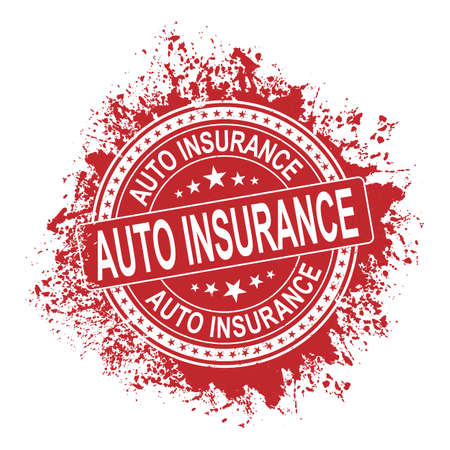Understanding Uninsured/Underinsured Motorist Coverage
If you’ve had your uninsured or underinsured motorist (UM/UIM) claim denied, the first step is to understand what this coverage actually means and how it works in the United States.
What Is UM/UIM Coverage?
Uninsured Motorist (UM) coverage helps pay for your injuries or property damage if you’re hit by a driver who doesn’t have any insurance. Underinsured Motorist (UIM) coverage kicks in when the at-fault driver has some insurance, but not enough to cover all your losses. Both types of coverage are designed to protect you when the other driver can’t pay for the damages they caused.
Key Features of UM/UIM Coverage
| Type | What It Covers | When It Applies |
|---|---|---|
| Uninsured Motorist (UM) | Your injuries and/or property damage | The at-fault driver has no insurance |
| Underinsured Motorist (UIM) | Your injuries and/or property damage | The at-fault drivers insurance is insufficient |
How Does UM/UIM Work?
In most states, UM/UIM coverage is either required or available as an add-on to your car insurance policy. If you’re involved in an accident with an uninsured or underinsured driver, you file a claim with your own insurer under your UM/UIM coverage. The company then reviews your case to decide whether your policy applies and how much compensation you should receive.
Why Are UM/UIM Claims Sometimes Denied?
Insurance companies may deny these claims for several reasons. Here are some common issues:
| Reason for Denial | Description |
|---|---|
| Lack of Evidence | You need proof that the other driver was uninsured or underinsured, and that they were at fault. |
| Policy Exclusions | Your policy might have certain exclusions or limitations that apply to your situation. |
| Missed Deadlines | If you don’t report the accident or file your claim on time, the insurer may deny it. |
| Coverage Limits | Your damages might exceed your policy limits, or your loss might not be covered as you expected. |
| Lack of Cooperation | If you don’t provide requested information or documentation, the insurer might deny your claim. |
Getting Familiar with Your Policy
The details of UM/UIM coverage can vary widely depending on where you live and what kind of policy you have. It’s important to review your own insurance documents and talk to your agent if anything is unclear. This way, if your claim is denied, you’ll be better prepared to appeal or dispute the decision.
2. Reviewing Your Claim Denial Letter
When your uninsured or underinsured motorist claim gets denied, the first step is to carefully review the denial letter you received from your insurance company. This letter is a key document that explains why your claim was turned down and gives you clues about what to do next.
Understanding the Denial Notice
The denial letter should clearly state the specific reasons for the denial. Insurance companies in the U.S. are required by law to provide a written explanation. Here’s what you should look for in your letter:
| Section of Letter | What It Means | What You Should Do |
|---|---|---|
| Reason for Denial | Lists the exact reason(s) your claim was denied (e.g., missing documents, policy exclusions, late reporting) | Take note of each reason; youll need to address these in your appeal or dispute |
| Policy References | May quote specific parts of your policy that apply to the denial | Find and read these sections in your own policy documents for better understanding |
| Missing Documentation | Might mention evidence or paperwork that was not included or is incomplete | Make a checklist of what needs to be gathered or corrected before filing an appeal |
| Appeal Instructions | Tells you how and when you can challenge the decision (deadlines, forms, contact info) | Mark important dates and follow all instructions exactly as stated |
Identifying What’s Missing or Insufficient
The denial notice will often point out what evidence or documentation was lacking. For example, they might say there wasn’t enough proof that the other driver was uninsured, or that medical bills were incomplete. Pay close attention to any suggestions about what could have changed the outcome—this will guide you on what to fix for your appeal.
Common Reasons for Denial and How to Respond
| Denial Reason Example | How to Address It in Your Appeal |
|---|---|
| No proof other driver was uninsured/underinsured | Gather police reports, DMV letters, or affidavits confirming their insurance status at the time of accident |
| Lack of timely notification of accident/claim | Explain any delays with supporting evidence (hospital records, communication logs) |
| Insufficient medical documentation | Submit complete medical records, bills, and doctor statements related to injuries from the accident |
| Certain damages not covered by policy terms | Double-check your policy; if you believe coverage applies, highlight those sections in your appeal letter and explain why they support your case |
Tip: Stay Organized!
Create a folder (physical or digital) for all correspondence, documents, and notes related to your claim. This will make it easier when preparing your appeal and communicating with your insurer.

3. Gathering Supporting Documentation
When your Uninsured/Underinsured Motorist (UM/UIM) claim is denied, having the right documents can make a big difference in your appeal. Insurance companies want proof that your claim is legitimate, so it’s important to gather as much evidence as possible. Here’s what you should look for and how these documents can help support your case.
What Documents Should You Collect?
Start by making a checklist of all the items that might help prove your side of the story. These documents show what happened, who was involved, and how you were affected.
| Type of Document | Why It Matters |
|---|---|
| Police Report | This official report details the accident and often includes who was at fault, which is key for UM/UIM claims. |
| Witness Statements | If anyone saw the accident, their written or recorded statements can back up your version of events. |
| Medical Records | Your doctor’s notes, treatment records, and bills show the extent of your injuries and connect them to the accident. |
| Photos/Videos | Pictures or videos from the scene can illustrate vehicle damage, injuries, and road conditions. |
| Repair Estimates/Bills | These show the cost of fixing your vehicle or other property damaged in the crash. |
| Correspondence with Insurers | Saves emails and letters between you and any insurance company related to the claim or denial. |
| Proof of Insurance Status | This could be documentation showing that the at-fault driver was uninsured or underinsured at the time of the accident. |
How to Organize Your Evidence
Keep everything in one folder—either physical or digital. Label each item clearly so you can find it quickly when needed. For digital files, use clear names like “Accident_Photos,” “ER_Medical_Report,” or “Witness_Statement_John_Doe.” This organization will help you present a strong, well-supported appeal.
Tips for Getting Missing Documents
- If you don’t have a police report, contact the local law enforcement agency that responded to your accident.
- If you need medical records, ask your healthcare provider for copies. You may need to fill out a release form.
- If witnesses haven’t given statements yet, reach out to them as soon as possible while details are still fresh in their minds.
- If you’re missing insurance info about the other driver, check with your own insurer—they may have collected this information during their investigation.
4. Filing an Appeal or Dispute
Understanding the Appeals Process
If your uninsured or underinsured motorist claim has been denied, you still have options. The appeals process allows you to challenge the insurance company’s decision. It’s important to follow each step carefully and keep track of all deadlines.
Common Steps in the Appeals Process
| Step | Description | Typical Timeline |
|---|---|---|
| 1. Review Denial Letter | Read your denial notice thoroughly to understand why your claim was denied. | Immediately after receiving the letter |
| 2. Gather Documentation | Collect all relevant documents: police reports, medical records, repair estimates, correspondence with the insurer, and any other supporting evidence. | Within a week of review |
| 3. Submit Formal Appeal | Write a detailed appeal letter explaining why you believe the denial was incorrect. Attach copies of all evidence. | Within 30 days (varies by state and policy) |
| 4. Follow Up with Insurance Company | Contact your claims adjuster or customer service to confirm receipt of your appeal and ask about next steps. | 1-2 weeks after submission |
| 5. Attend Hearings or Mediation (if needed) | If informal resolution fails, some states offer mediation or arbitration before court action. | Varies; usually within 60 days |
How to Communicate Effectively with Your Insurance Company
Clear and professional communication can make a big difference in the outcome of your appeal:
- Be Polite and Persistent: Stay calm, courteous, but firm during all interactions.
- Keep Records: Document every phone call, email, and letter. Note dates, names, and summaries of conversations.
- Email for Documentation: Whenever possible, communicate by email so you have a written record.
- Ask for Clarification: If something isn’t clear, request explanations in writing.
- Request Everything in Writing: This helps avoid misunderstandings about coverage or deadlines.
Your Rights as a Policyholder
You have the right to know why your claim was denied and to see the evidence used in making that decision. Most states require insurers to respond to appeals within specific timeframes—check your policy and state regulations for details. Don’t hesitate to seek help from your state’s Department of Insurance if you feel your appeal isn’t being handled fairly.
5. When to Seek Legal Help
If your uninsured or underinsured motorist claim has been denied, there are times when it makes sense to get help from an attorney. Understanding when and how to seek legal assistance can make a big difference in your case.
When Should You Contact an Attorney?
Not every denied claim needs a lawyer, but certain situations call for professional advice. Here are some common signs you should consider reaching out for legal help:
| Situation | Why Legal Help May Be Needed |
|---|---|
| The insurance company says you were at fault, but you disagree | An attorney can review evidence and argue your side effectively. |
| Your claim is complicated or involves serious injuries | Lawyers can navigate complex medical records and ensure fair compensation. |
| You feel pressured to accept a low settlement | Attorneys know how to negotiate with insurance companies for better offers. |
| The insurer uses confusing language or legal jargon | A lawyer can explain your rights and obligations in plain English. |
| Your appeal is denied again or you face delays without clear reasons | Legal professionals can escalate your case and keep the process moving. |
How to Find Qualified Legal Assistance in the U.S.
Finding the right attorney doesnt have to be overwhelming. Here are simple steps to help you connect with a qualified professional:
- Ask for Recommendations: Friends, family, or coworkers may know trustworthy attorneys who handle auto insurance disputes.
- Use State Bar Association Resources: Every state has a bar association with a website that lists licensed attorneys by specialty. Search for “auto insurance” or “personal injury” lawyers in your area.
- Check Online Reviews: Websites like Avvo, Martindale-Hubbell, and Google Reviews provide ratings and feedback on local lawyers.
- Schedule Free Consultations: Many personal injury attorneys offer free initial meetings so you can ask questions and see if theyre a good fit for your situation.
- Look for “No Win, No Fee” Options: Some lawyers work on contingency, meaning they only get paid if you win your case—this can reduce your financial risk.
What to Ask During Your Consultation
- How much experience do you have with uninsured/underinsured motorist claims?
- What are your fees and how are they structured?
- Have you handled cases similar to mine before?
- What is the likely outcome of my case?
- How will we communicate throughout the process?
Remember
If youre feeling lost or overwhelmed by the claims process, seeking legal help is a smart step. Attorneys understand the insurance system and can advocate for your best interests—especially when its tough to go it alone.


